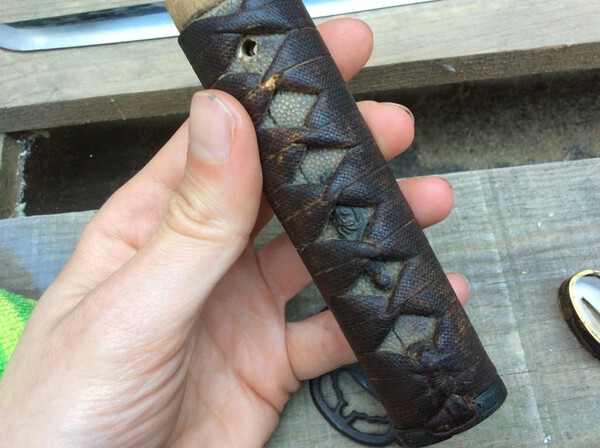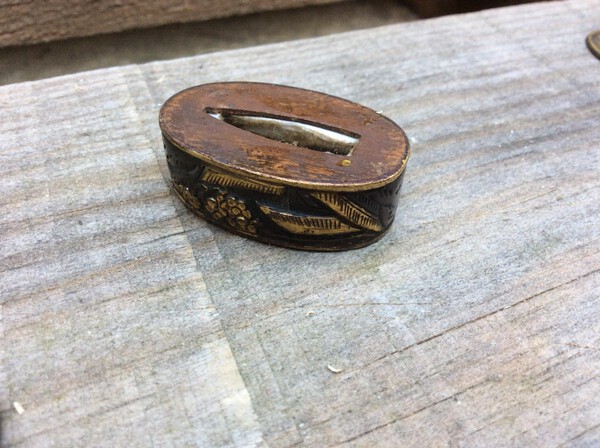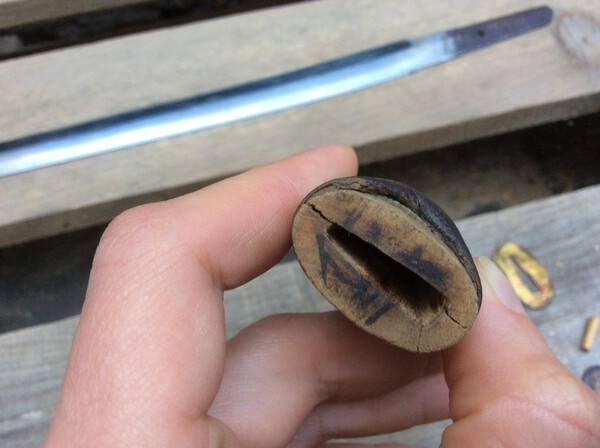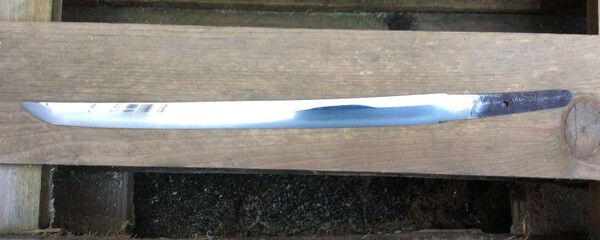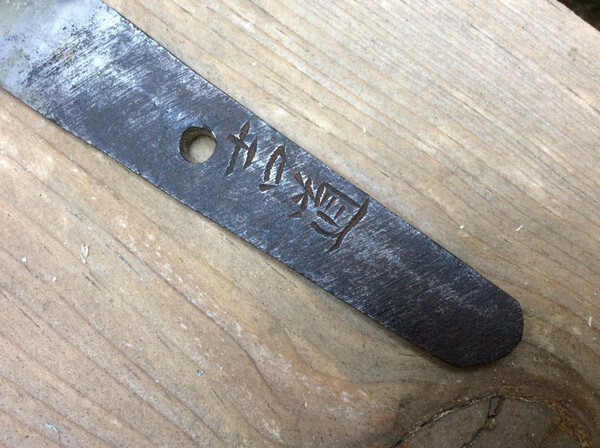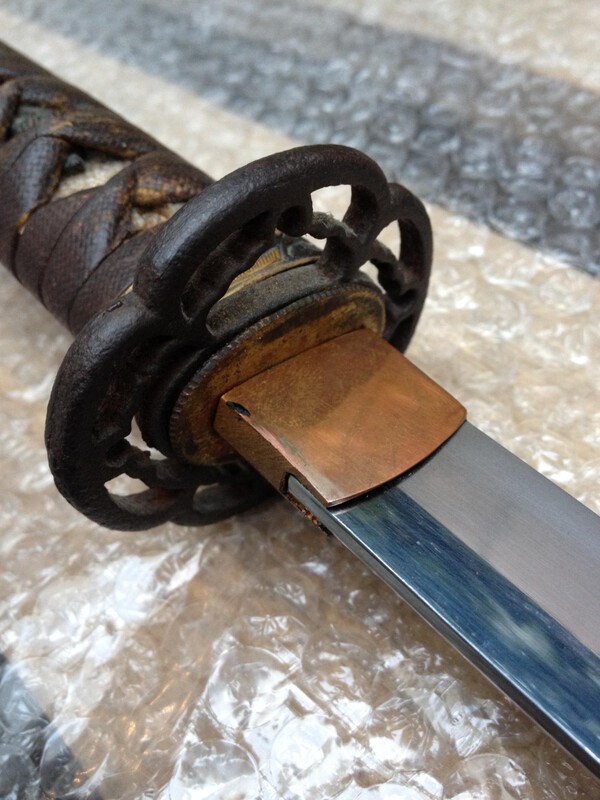
Fleck
Members-
Posts
17 -
Joined
-
Last visited
Everything posted by Fleck
-
Hi Mauro, That's an interesting theory! Thank you! But the question remains, how come it looks pretty used? De ray skin is gone in some places, the brown 'lace' looks dirty and has smoother spots on the higher parts like it was held a lot. Are these just normal signs of age or could it indeed be handled 'a lot'? If so, I guess this was mainly due to training? I know that this all is pure speculation, but that can be interesting as well. Cheers, Fleck
-
All, Thanks, everything is clear to me now! Although not the best news, it's always better to know the truth! Why would they have made a new small blade out of a part of another blade? Was it always ment to 'fool' collectors/buyers, or was it intended to be used as a blade/wakizashi by a merchant or someone like that? The whole set up, so the blade with tsuka and saya etc. looks to be a complete sword, which was made to fit together the way it now is. On top of that, it looks quite old and somewhat used. It's still a difference (at least to me) wheather this sword was made like this as a fake wakizashi, or that it was made, say 150 years ago, like this for someone who couldn't afford an expensive wakizashi. The mei could ofcourse be added quite recently... Or do you think the whole set up, as it now is, is recently assembled? Fleck
-
Looks a lot like it indeed! Probably a dumb question, but why is the mei on 'my' blade only showing 'Yoshimichi' and not the 'Yamato-part'? Fleck
-
Thanks Dirk and Jean! I don't know if this particular sword is or was listed on eBay. As far as I know it's not for sale on the internet at the moment.
-
I'll try to make another photo of it as soon as possible. The blade isn't really thinner than the nakago, so it probably wasn't resharpened too often then. Although a lower quality sword and not attractive to the serious collector, can't it be considered as an original short Japanese wakizashi? Its length namely does fit into the mimimal lenght a wakizashi should have and all the parts seem to be at least 'original' Japanese from before 1900. Do you guys at least agree with Pauls conclusion: ''What you have is an authentic Japanese blade which is at least 150 years old and may be a lot more. It isnt a national treasure, but equally it is not a Chinese fake which often appear here as peoples first buys.'' ? Cheers, Fleck
-
Paul and Grey, Thanks for your honest opinions and explanations. I wanted to know the 'truth' about this particular sword, that's why I entered the forum in the first place. Good to know a lot more about it now, since I'm not someone who wants to believe something just based on feelings or speculations. I'll definitely be looking after the books mentioned on this forum and will follow your advise. Of course it's a bit disappointing, but at least it's a 'real' old Japanese sword, although of poor quality and from a later period, and not some modern fake. Cheers, Fleck
-
Hi Paul, Thanks for the explanation of machi okuri. Does it seem like it was once greatly shortened, or does it look alright? At least to me the proportions (lenght of the nakago compared to lengt of the blade) look quite right. So do you guys have the feeling that this is a sunobi tanto/ko-wakizashi, or just a normal, although at the bottom of the lenght-scale, wakizashi? Or can it be considered all 3 at the same time, depending on how one looks at it? Does it look used/sharpened a lot? If so, for which purpose could this blade have been used? I understood that there almost weren't any real wars in Edo period (especially during Shinto), so what would you use such a weapon for then? Were they heavily used during training, or maybe for other tasks? An finally, could this blade have been used in a daisho-setup together with a katana, or would it have been to small/short for that? Sorry for the many questions, but I'm new to this field and like to know as much as possible... I really appreaciate your time to answer me! Fleck
-
Thank you, Geraint. I see what you mean. So not a high quality set up, but a cheaper/later version. Could you possibly guess from which era this is? From the wear and 'patina' it looks fairly old though, so I guess at least from before 1900? The sword handle, especially the ita and the ray skin, in total looks pretty used though, any idea what it could be used for? If it was just made for display or fun I would suspect it to be in better/unused shape. Was this sword, although featuring late/poor koshirae, probably handled a lot? If so, I guess not for fighting, so then for what? Practice? Not your ideal knife to cut your steak, or to peel potatoes with... Thanks for your opinion and the link! Fleck
-
Thank you very much again, Jean! What exactly does machi okuri mean? So the shape is indeed common for a wakizashi (shinogi zukuri), but you would suspect a tanto shape (hira zukuri) since you think it could be a sunobi tanto as well? Is it to small to be classified as a wakizashi? I read that blades from 30cm long are concidered as wakizashi's? It could be a ko-wakizashi though, since it's not much longer than a tanto... Just for my own understanding, should we consider this blade as a ko-wakizashi, or just a regular wakizashi? The shape of it 'confirms' that it can't be a tanto, since they mostly feature the hira zukuri instead of shinogi zukuri, like this one. Besides that, the blade length just fits (by 1 cm!) into the wakizashi-category. Is it a cheap/poor blade, or has it just been used/sharpened a lot over the years? Any suspicions that it once was much longer? Fleck
-
Thanks guys, will try to check it out! @Dirk: What do you mean it seams off? Something wrong with the mei? Do others agree that this blade could possibly be from the late late shinto/shinshinto period, based in how it looks in general and the appearance of the nakago? Fleck
-
Thanks guys! @ Mauro: The dimensions you wrote are pretty much the same. I would say they are 5,8 x 5,1 x 4/5 mm. You earlier said that it's probably post-edo, so that would be after 1868? The blade that 'belongs' to the tsuka (and tsuba) is probaly a lot older, say late shinto/early shinshinto. Could such a casted tsuba be from this period as well? @ George: Thanks, that could indeed be the case! What do you guys think about the tsuka itself and about the saya? Cheers, Fleck
-
Morning Joe, Thanks for the info! I've done some searching on the internet and stumbled upon site's like japaneseswordindex.com but wasn't really able to find oshigata for smiths named 'Yoshimichi'. Any tips were I could search? Thanks, Fleck
-
-
Good evening, Thanks for your opiniosn so far. I have some additional photo's which might give a bit more details. Some extra photo's of the scabbard as well, don't know if I'm allowed to post those here as well? It has an extra small knife on the side. Thanks a lot, Fleck
-
Good evening gents, Any toughts on this blade? It measures about 40 cm in total (from the point to the end of the nakago) and about 31 cm from the point to the ha-machi/notch. The mei looks 吉道 to me, so I guess it's made by one of the Yoshimichi's? I've noticed that there were many smiths that signed with Yoshimichi, is it possible to find the right one? Can someone tell me how old this blade might be plus any other interesting details? Cheers and thank you very much, Fleck
-
Thanks so far guys, more opinions are very welcome!
-
Hallo all, I was wondering if you guys could give me some information about these parts: tsuba, fuchi, kashira and the tsuka as a whole. Maybe how old it could possibly be and what the different symbols mean. Info on the seppa and habaki would be welcome as well, but don't know if they belong in this section as well! Thanks a lot, Fleck

